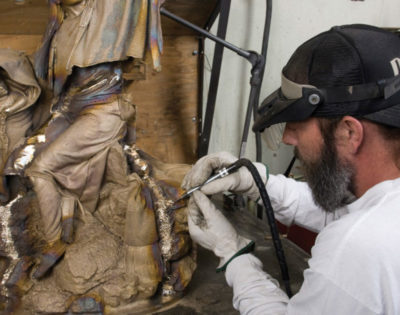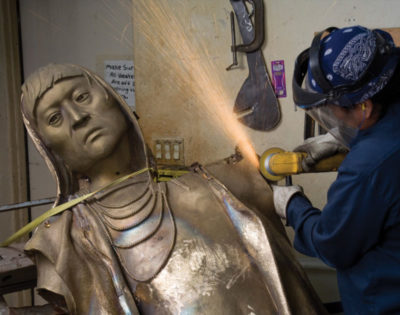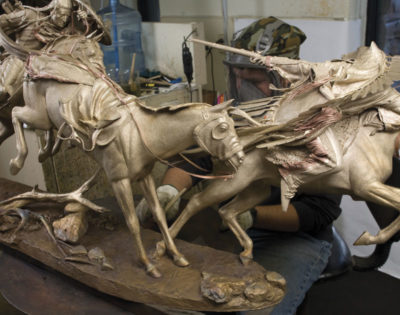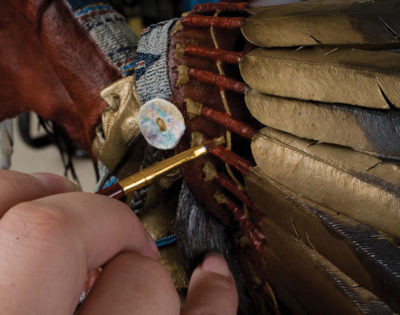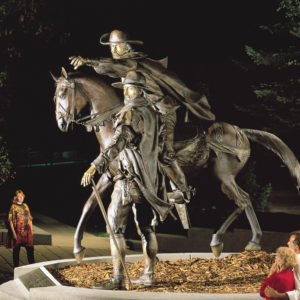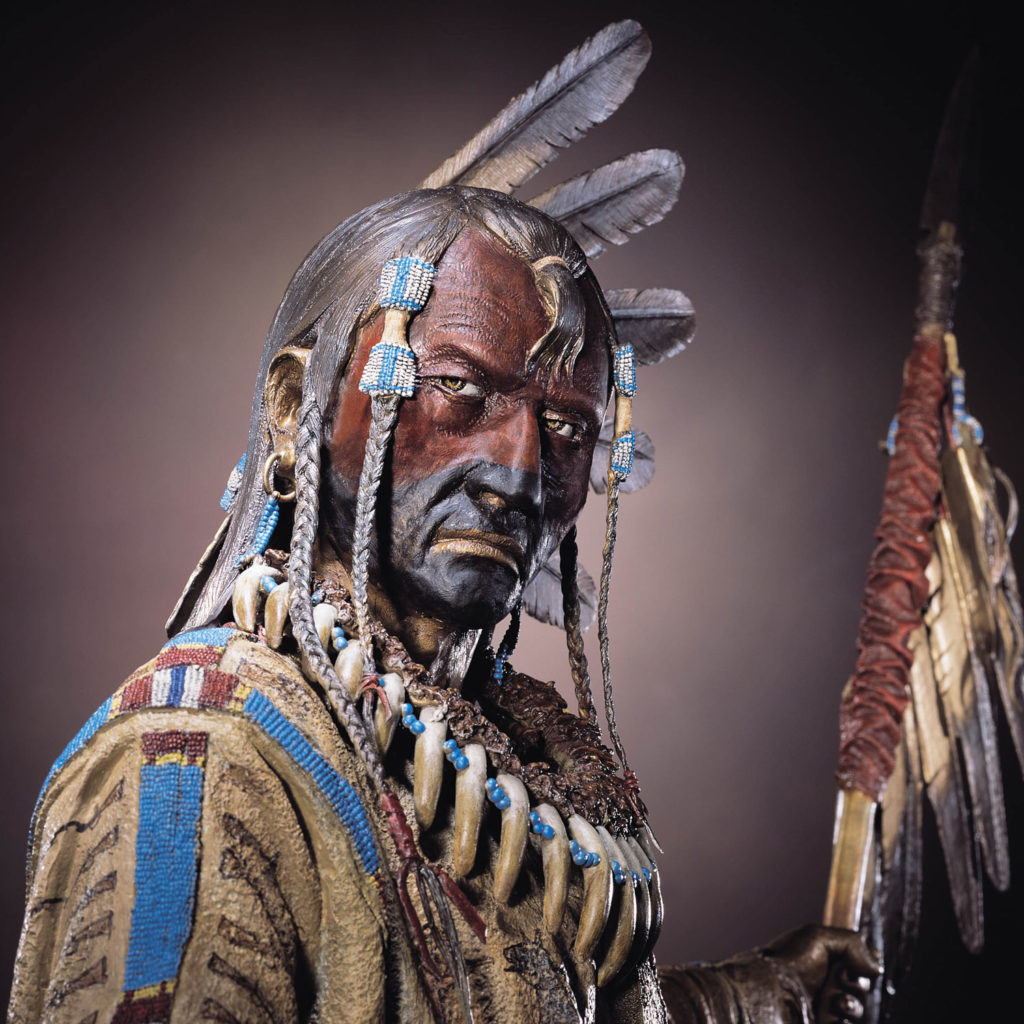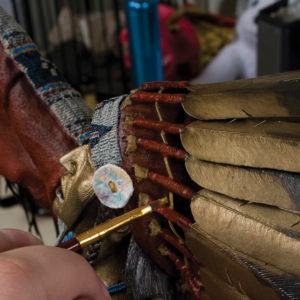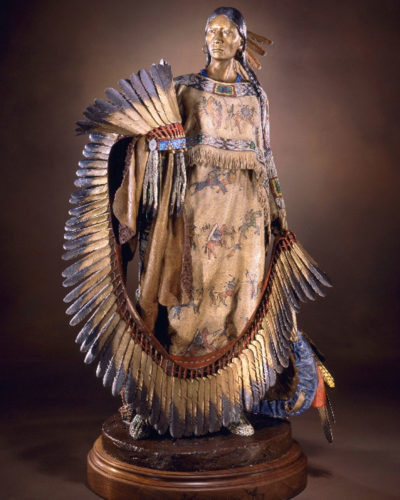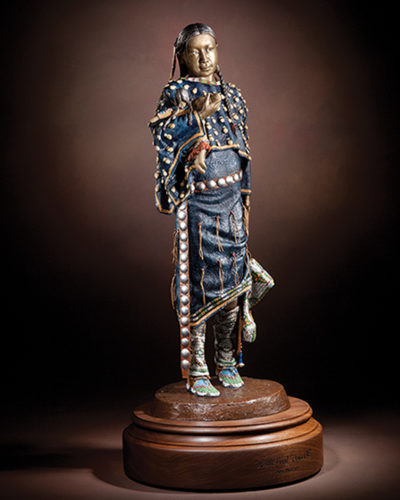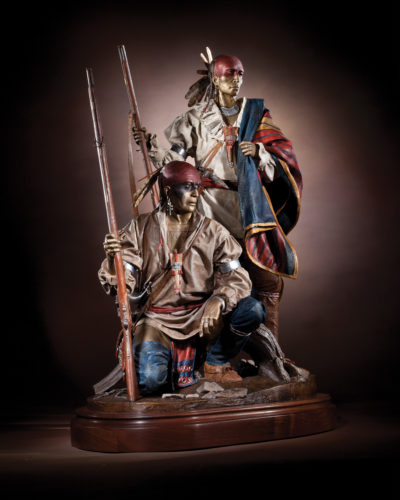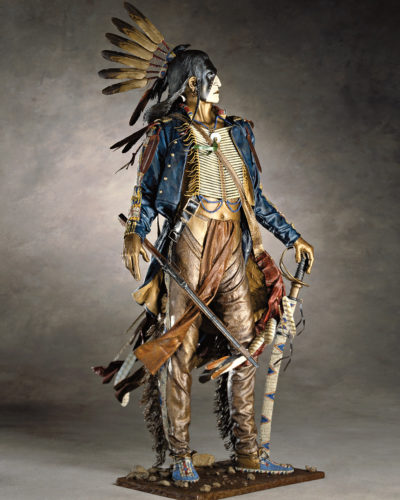From Beginning to Bronze
The McGary Process
Dave McGary always worked from the inside out.
He only sculpture after countless hours of sat down create a research. In most cases, that meant traveling to distant corners of the lonely plains to meet with tribal elders and historians, and visiting with the kinfolk of the subject. Only when he felt like he had a true sense of the person he was about to sculpt – a connection to that inner self-did his studio work begin.
Unlike most sculptors, McGary rarely sketched. And when he did, they rough simple drawings. His first step was to build were an armature, which he considered a three dimensional sketch. Using steel wire, he would craft a framework that was in reality a skeleton, the internal structure that supported everything.
Even though no one would see these wire bones, McGary worked diligently to get them just right. This was where the posture and attitude, much of the spirit of the piece would be conveved.
Then McGary would apply the clay, working again from the inside out. He first built a layer of muscle, then added the skin and finally the clothing and other artifacts like gun, spear and shield. The sculptor used a hard clay, one that had to be heated in an oven to make it more pliable as he wrapped it around the wire Once the anatomy was correct, elaborate details were added McGary would often work the clay for three to four months.
When the clay figure complete, a mold was made. This was negative mold was then filled with melted wax. After cooling, mold was stripped away leaving a wax shell. Here at this stage McGary could shape the wax, making changes adding more details. The wax would be dipped into a slurry, creating a new ceramic mold.
Heating the ceramic melted the wax, which was then replaced is known as the lost wax with molten bronze. This technique method. Once the metal solidified, the ceramic mold was beaten away with hammers.
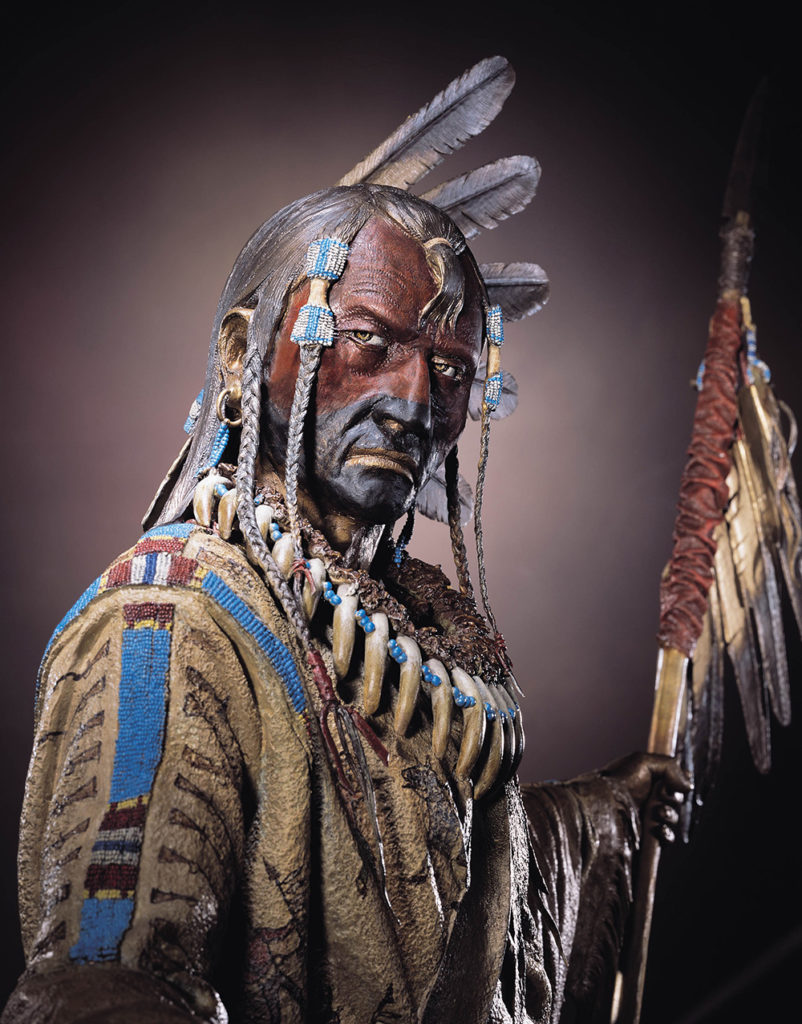
Because of the intricacy of McGary’s work, multiple castings were made of the many fragile elements of each sculpture such as guns, fringe and feathers. McGary worked closely with craftsmen in multiple foundries, calling on his own experience in Italy, to teach new techniques and ensuring the quality of every component cast. Somewhere, Harry Jackson, McGary’s mentor who wanted to preserve the art of pouring bronze, had to be smiling.
The rough bronzes were sent to McGary’s studio in Ruidoso, New Mexico, where the artist and his staff began the finishing process-grinding, welding and assembling individual pieces into the complete sculpture.
To apply a patina, the bronze is heated as chemicals are applied to the surface. This speeds up the oxidation process and creates shades of color. Different chemicals react with the bronze to achieve different hues.
For most sculptors this would be the final step in completing the work. But McGary pioneered the blending of patina and paint, Oie of the many reasons he achieved such a following in the art world. His plan was never to paint an entire piece because he wanted the bronze to show through. But he also knew he needed to incorporate bursts of color to take the work to another level. The paint enhanced the lavish details and redefined the reality of a McGary sculpture.
It wasn’t enough to simply have the artistic vision to paint his bronzes; McGary had to develop techniques to make it possible. This was something that wasn’t being done. For the areas that were to be painted, a chemical was applied to help the paint adhere. A watered down acrylic paint was carefully brushed on in layers while the surface was heated.
The process was labor-intensive, with every tiny detail painstakingly painted by hand. Intricate shields, quilts and jackets sprang to colorful life with the dab of a tiny brush. Breastplates and feathers, jewelry and clothing, ornate beaded moccasins and fiercely adorned faces were painted.
It is a testament to McGary’s skill at how easily the painted items fool the human eye. The metal seemed to suddenly disappear, replaced by brightly colored cloth, leather, beads and wispy feathers. We are reminded again and again, why Dave McGary was known as the “Master of Realism.”
Once the painting was completed, a chemical sealant was applied. The finished sculpture was now ready to withstand the elements While most of McGary’s work is displayed in private collections galleries and museums, there are numerous life-size and monumental pieces that live outdoors, unfazed by sun, rain and snow.
McGary started each piece with a passionate idea and then wrapped clay around steel wire to express it. And through his innate compassion, artistic vision and unparalleled craftsmanship. he could guide that creation through a lengthy and complex process. Along the way, he taught others, just as he had been taught. When finished, he had produced a portal to the past disguised as a brilliant, beautiful and startlingly lifelike Native American bronze sculpture.
“For Dave McGary, there truly were no limits.”
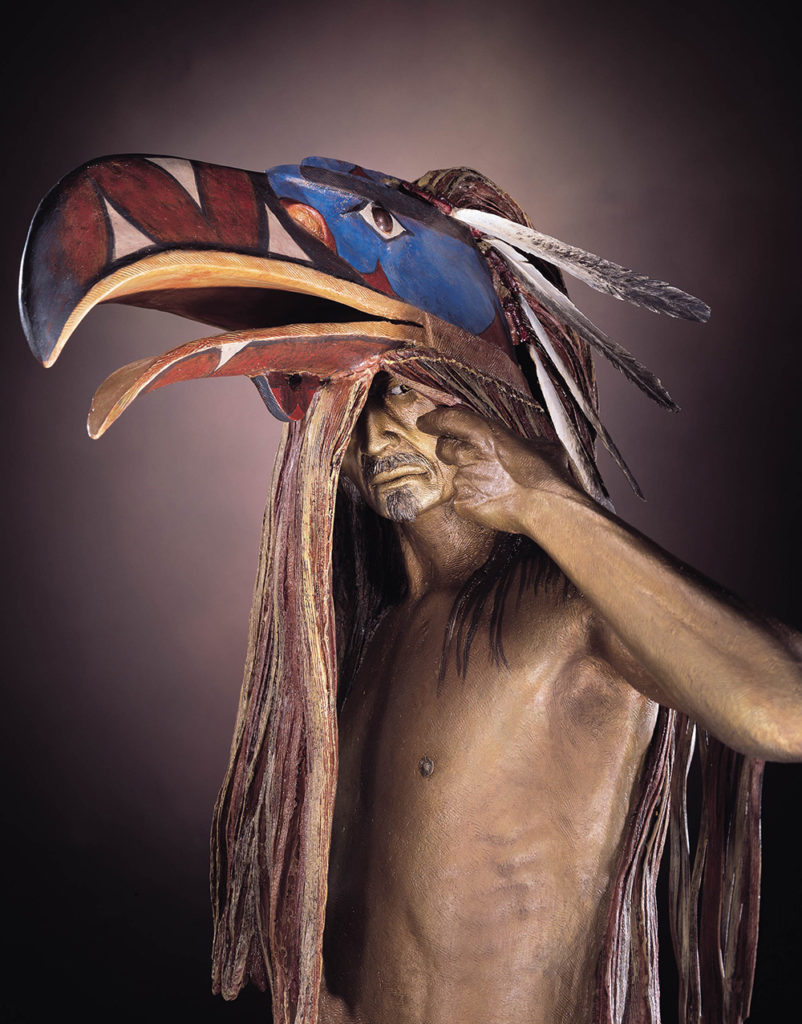
Because of the intricacy of McGary’s work, multiple castings were made of the many fragile elements of each sculpture such as guns, fringe and feathers. McGary worked closely with craftsmen in multiple foundries, calling on his own experience in Italy, to teach new techniques and ensuring the quality of every component cast. Somewhere, Harry Jackson, McGary’s mentor who wanted to preserve the art of pouring bronze, had to be smiling.
The rough bronzes were sent to McGary’s studio in Ruidoso, New Mexico, where the artist and his staff began the finishing process-grinding, welding and assembling individual pieces into the complete sculpture.
To apply a patina, the bronze is heated as chemicals are applied to the surface. This speeds up the oxidation process and creates shades of color. Different chemicals react with the bronze to achieve different hues.
For most sculptors this would be the final step in completing the work. But McGary pioneered the blending of patina and paint, Oie of the many reasons he achieved such a following in the art world. His plan was never to paint an entire piece because he wanted the bronze to show through. But he also knew he needed to incorporate bursts of color to take the work to another level. The paint enhanced the lavish details and redefined the reality of a McGary sculpture.
It wasn’t enough to simply have the artistic vision to paint his bronzes; McGary had to develop techniques to make it possible. This was something that wasn’t being done. For the areas that were to be painted, a chemical was applied to help the paint adhere. A watered down acrylic paint was carefully brushed on in layers while the surface was heated.
The process was labor-intensive, with every tiny detail painstakingly painted by hand. Intricate shields, quilts and jackets sprang to colorful life with the dab of a tiny brush. Breastplates and feathers, jewelry and clothing, ornate beaded moccasins and fiercely adorned faces were painted.
It is a testament to McGary’s skill at how easily the painted items fool the human eye. The metal seemed to suddenly disappear, replaced by brightly colored cloth, leather, beads and wispy feathers. We are reminded again and again, why Dave McGary was known as the “Master of Realism.”
Once the painting was completed, a chemical sealant was applied. The finished sculpture was now ready to withstand the elements While most of McGary’s work is displayed in private collections galleries and museums, there are numerous life-size and monumental pieces that live outdoors, unfazed by sun, rain and snow.
McGary started each piece with a passionate idea and then wrapped clay around steel wire to express it. And through his innate compassion, artistic vision and unparalleled craftsmanship. he could guide that creation through a lengthy and complex process. Along the way, he taught others, just as he had been taught. When finished, he had produced a portal to the past disguised as a brilliant, beautiful and startlingly lifelike Native American bronze sculpture.
“For Dave McGary, there truly were no limits.”
METAL
Continue scrolling down

PATINA
Continue scrolling down

PAINTING
Continue scrolling down

Featured Pieces
A selection of Dave’s pieces perfect for your collection. Take a look at some of the beautiful pieces currently available.
